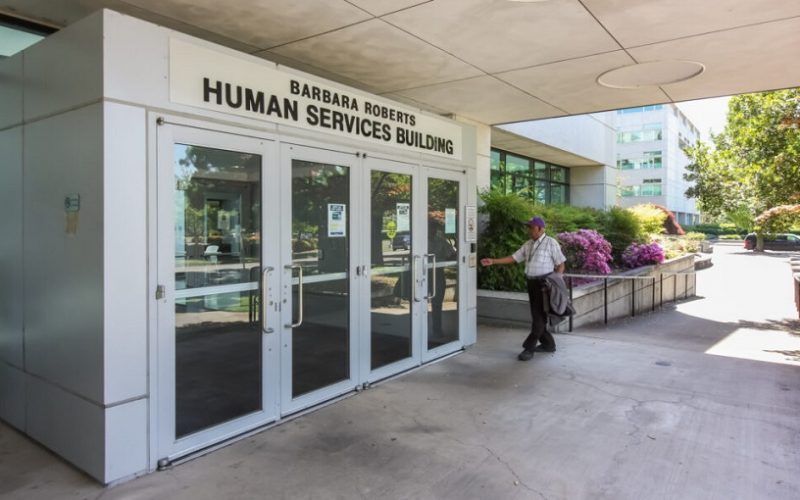Salem, OR – Oregon officials are advancing a child welfare proposal aimed at addressing the growing need for treatment options for foster children with complex needs, including mental health conditions. The proposal, known as Legislative Concept 346, is designed to increase the placement of children who have high-acuity needs, including mental health challenges, and reduce instances of unplanned discharges from the foster care system.
The proposal comes in response to several longstanding issues within Oregon’s foster care system, including a shortage of providers and facilities equipped to care for children with significant behavioral health challenges. The state’s child welfare system, which currently serves about 4,500 foster children, is under a court order to improve its operations following a lawsuit filed by former foster children who suffered physical and mental abuse within the system.
Michelle Pfeiffer, the Oregon Department of Human Services’ legislative child welfare coordinator, testified before lawmakers that the proposal was crucial for addressing the challenges faced by foster children, especially after the tragic suicide of a 17-year-old foster child in Eugene in August. Pfeiffer emphasized that without additional placement options for children with complex needs, many of the state’s current solutions would be ineffective.
The proposal is backed by the Oregon Department of Human Services (DHS) and the state’s System of Care Advisory Council. Supporters of the plan argue that it aims to address a critical shortage of therapeutic foster care providers, which has plummeted by nearly 50% since 2014. They also note that current regulations and safety standards have made it increasingly difficult to recruit and retain workers, further limiting the availability of care.
However, the proposal has drawn early opposition from key lawmakers, particularly Sen. Sara Gelser Blouin, a Democrat from Corvallis who has spearheaded numerous reforms to improve foster child safety in Oregon over the past decade. Gelser Blouin expressed concerns that the proposal could roll back protections for foster children, particularly in regard to the use of restraints and out-of-state placements.
“I fundamentally disagree with the premise that if agencies don’t want to serve kids because they fear accusations of abuse, we need to reduce accountability or allow behaviors that are currently considered abusive,” Gelser Blouin said. She pointed to the increase in the use of restraints on children despite previous legislation, such as Senate Bill 710, which banned restraining children in care with few exceptions.
A central element of the proposal includes revising definitions of “wrongful restraint” to apply across foster care agencies, schools, and other child care settings. Proponents argue that this change would reduce the number of legally required reports to the state’s child abuse hotline, freeing up resources for investigations into more serious concerns. They also contend that these changes could help ease the burden on under-staffed agencies and allow them to retain employees who fear being investigated for minor infractions.
Yet Gelser Blouin warned that such changes could undermine the safety and accountability measures designed to protect children from harmful practices. She also expressed concerns about the proposal’s potential to expand out-of-state placements, which had previously been restricted under Senate Bill 1605 passed in 2020. The proposal calls for allowing out-of-state placements when deemed medically necessary by Medicaid, a move that supporters argue would increase available treatment options for children in Oregon. Gelser Blouin, however, argued that many children had been harmed in previous out-of-state placements and that returning to such practices could endanger children once again.
Anna Williams, executive director of the System of Care Advisory Council, acknowledged that the proposal is still in draft form and would likely evolve as it moves through the legislative process. She explained that the goal of the proposal is to create a culture in which providers are more willing to care for children with complex needs by addressing barriers created by current regulations. She emphasized the importance of finding a balance between regulatory reform and child safety, noting that accountability should still be maintained for instances of abuse or mistreatment.
Despite these concerns, Williams underscored that the proposal’s ultimate aim is to increase placements for children and reduce gaps in care for those with the most difficult behavioral and mental health needs. “We have to be able to be open and honest about the fact that mistakes happen,” Williams said. “The goal is to learn from those mistakes and find ways to do better.”
As the legislative session approaches, the child welfare proposal remains a contentious issue, with both sides acknowledging the need for reform but differing sharply on the best way to achieve it. Lawmakers will continue to refine the proposal in the coming months, but the debate highlights the delicate balance between expanding treatment options and maintaining safeguards for vulnerable children in the state’s foster care system.











